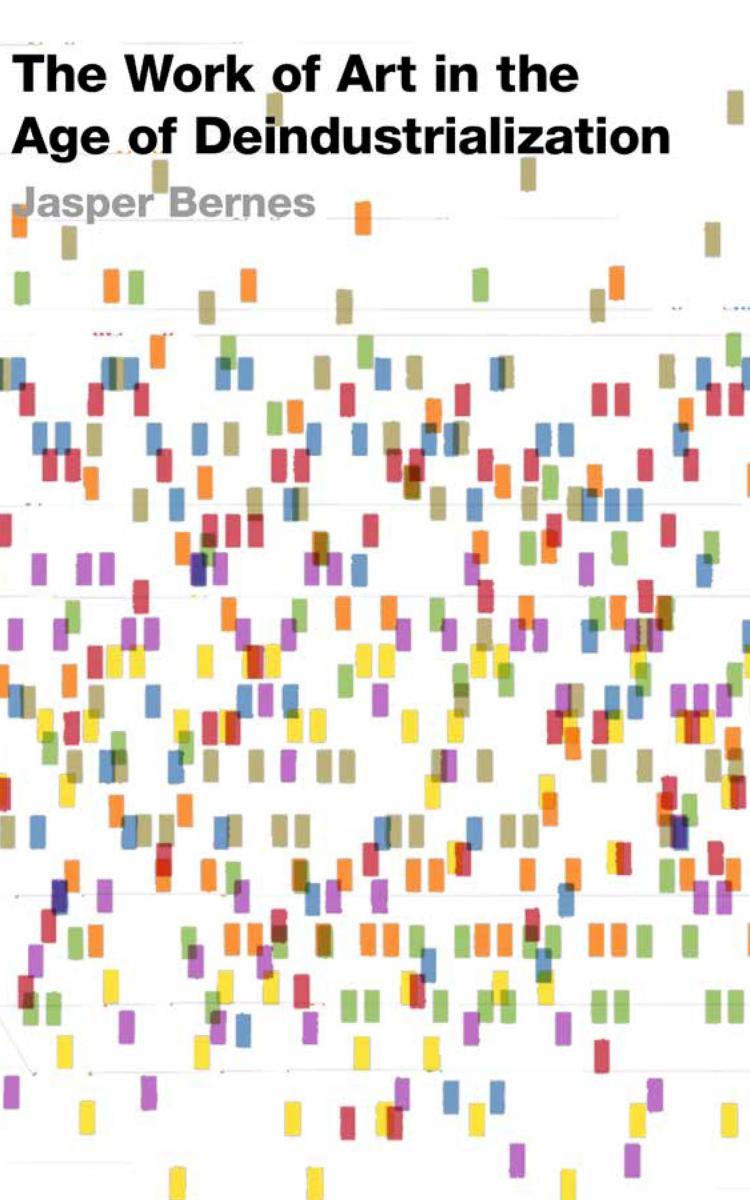The Work of Art in the Age of Deindustrialization by Jasper Bernes

Author:Jasper Bernes [Bernes, Jasper]
Language: eng
Format: epub, pdf
Publisher: Stanford University Press
Published: 2017-04-14T16:00:00+00:00
4
The Feminization of Speedup
For many readers, discussion of the restructuring of labor from the 1970s forward will bring to mind a singular figure and image: the office. While previous chapters have addressed office and white-collar work from the standpoint of office hierarchies, relations, and technologies, one very crucial aspect of the office and office work has remained unexamined—the gender of office work, particularly the growth in feminized and poorly paid clerical or secretarial work in the postwar period. In a telling turn of phrase, gadfly conceptual writer Kenneth Goldsmith (discussed in Chapter 5) asserts that “contemporary writing requires the expertise of a secretary crossed with the attitude of a pirate: replicating, organizing, mirroring, archiving, and reprinting, along with a more clandestine proclivity for bootlegging, plundering, hoarding, and file-sharing.”1 In associating office work and contemporary writing and art, Goldsmith confirms the arguments developed in the last chapters and points out their relevance to contemporary debates, but his use of the term “secretary” indicates that the poetics of administration, of information management, needs to be investigated in light of the feminization of clerical work in the postwar period. As we have already seen, many of the most important writing and art experiments from the 1960s and 1970s index a broad poetics or aesthetics of administration that draws its means and techniques from the world of the contemporary office. At the same time, another front of avant-garde and conceptualist art and writing began, in the 1960s and 1970s, to treat the sphere of unpaid reproductive labor, housework. Artists such as Mary Kelly, Martha Rosler, and Judy Chicago engaged in what Mierle Ukeles called “Maintenance Art,” using art to direct attention toward the maintenance activities, “washing, cleaning, cooking, renewing, supporting, preserving,” which are normally devalorized if not invisible.2 Feminist poets involved in the debates and confrontations of the women’s movement produced poems and anthologies of poems that focused on women’s experience, especially the sexual division of labor in the home—here the work of Audre Lorde and Adrienne Rich is seminal, as is the 1973 anthology No More Masks. But very few works of either art or literature addressed the spheres of paid and unpaid work conjointly, let alone the very specific case of feminized clerical labor, which develops the way it does in part because of the association of women with unpaid domestic work. Though there are some notable exceptions—such as Mary Kelley’s Post-Partum Document—few works from the period are as well placed to address the intersection of reproductive and clerical activities as Bernadette Mayer’s Memory (1972), a book whose foundational example (along with Mayer’s other early experiments) for later conceptual writing and art has mostly gone unacknowledged in contemporary conceptualist revivals. The book is, like Kenneth Goldsmith and twenty-first-century inheritors of the examples of the 1970s, deeply concerned with processes of “replicating, organizing, mirroring [and] archiving.” But it is also very much concerned with the interpenetration of housework and office work, as well as the ways in which the lines between the two can become deeply blurred.
Download
The Work of Art in the Age of Deindustrialization by Jasper Bernes.pdf
This site does not store any files on its server. We only index and link to content provided by other sites. Please contact the content providers to delete copyright contents if any and email us, we'll remove relevant links or contents immediately.
| Ancient, Classical & Medieval | Anthologies |
| British & Irish | Japanese & Haiku |
| Love Poems | Regional & Cultural |
| Themes & Styles | United States |
| Women Authors |
The Universe of Us by Lang Leav(14368)
The Sun and Her Flowers by Rupi Kaur(13696)
Adultolescence by Gabbie Hanna(8145)
Whiskey Words & a Shovel II by r.h. Sin(7482)
Love Her Wild by Atticus(7233)
Smoke & Mirrors by Michael Faudet(5510)
Wiseguy by Nicholas Pileggi(4586)
The Princess Saves Herself in This One by Amanda Lovelace(4510)
Love & Misadventure by Lang Leav(4357)
Milk and Honey by Rupi Kaur(4228)
Memories by Lang Leav(4172)
Good morning to Goodnight by Eleni Kaur(3807)
Bluets by Maggie Nelson(3711)
Too Much and Not the Mood by Durga Chew-Bose(3696)
Algedonic by r.h. Sin(3502)
Pillow Thoughts by Courtney Peppernell(3398)
The Poetry of Pablo Neruda by Pablo Neruda(3367)
HER II by Pierre Alex Jeanty(3170)
Stuff I've Been Feeling Lately by Alicia Cook(3055)
